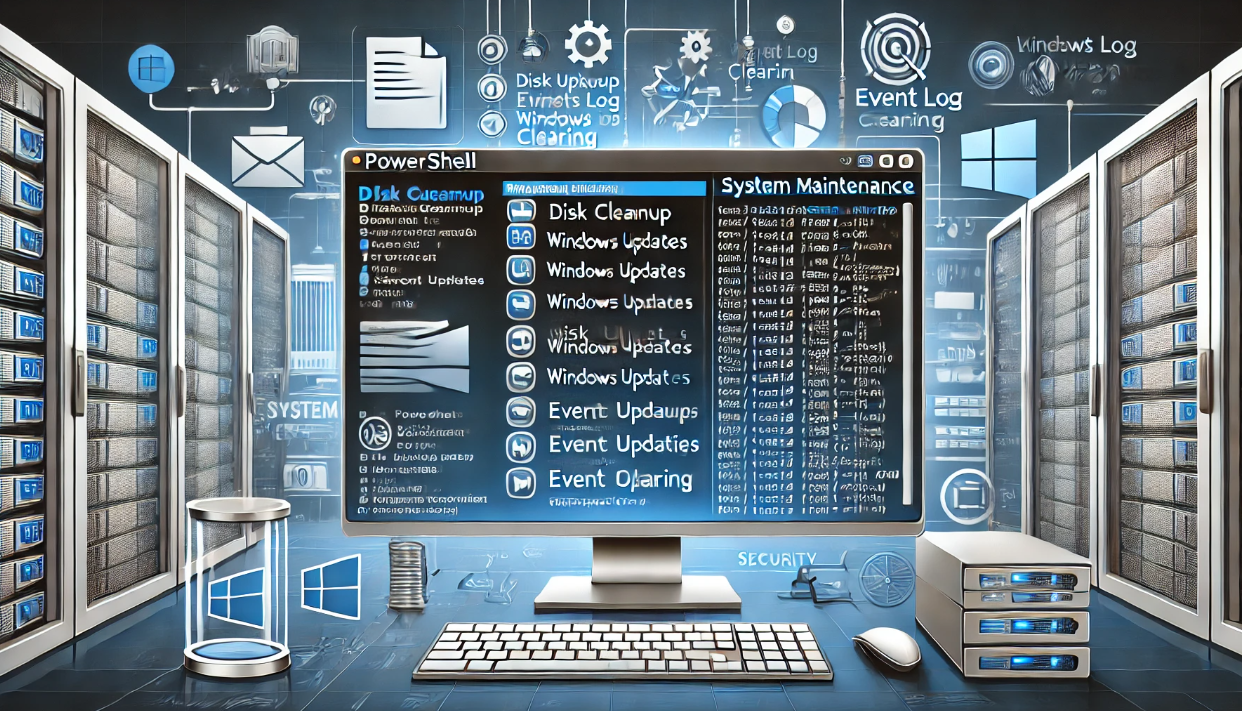⚡ Managing and Automating Windows Server with PowerShell
Introduction
Windows Server management can be complex, especially when handling user accounts, services, updates, and configurations across multiple machines. PowerShell, Microsoft’s powerful scripting language, simplifies these tasks by enabling automation and remote administration.
In this guide, we’ll cover:
- ✅ Essential PowerShell commands for Windows Server management.
- ✅ Automation scripts to streamline administrative tasks.
- ✅ Remote administration techniques for managing multiple servers efficiently.
1. Essential PowerShell Commands for Windows Server Management
Checking System Information
Get-ComputerInfo[System.Environment]::OSVersion(Get-CimInstance Win32_OperatingSystem).LastBootUpTimeManaging Windows Services
Get-Service -Name wuauservStart-Service -Name wuauservRestart-Service -Name SpoolerGet-Service | Where-Object { $_.Status -eq "Running" }Managing Users and Groups
New-LocalUser -Name "JohnDoe" -Password (ConvertTo-SecureString "Password123!" -AsPlainText -Force) -FullName "John Doe"Add-LocalGroupMember -Group "Administrators" -Member "JohnDoe"Disable-LocalUser -Name "JohnDoe"Remove-LocalUser -Name "JohnDoe"Managing Windows Updates
Get-WindowsUpdateInstall-WindowsUpdate -AcceptAll -AutoRebootGet-HotFix | Sort-Object InstalledOn -Descending2. Automating Tasks with PowerShell Scripts
Example: Automated Backup Script
$source = "C:Data"
$destination = "BackupServerBackupsData_$(Get-Date -Format 'yyyyMMdd').zip"
Compress-Archive -Path $source -DestinationPath $destination
Write-Host "Backup completed successfully!"Example: Clearing Log Files Automatically
$logs = Get-WinEvent -LogName Security, System, Application -Oldest -MaxEvents 5000
$logs | Where-Object { $_.TimeCreated -lt (Get-Date).AddDays(-30) } | Remove-EventLog
Write-Host "Old logs have been deleted!"Example: Bulk User Creation from a CSV File
$users = Import-Csv -Path "C:users.csv"
foreach ($user in $users) {
New-LocalUser -Name $user.Username -Password (ConvertTo-SecureString $user.Password -AsPlainText -Force) -FullName $user.FullName
Add-LocalGroupMember -Group "Users" -Member $user.Username
}
Write-Host "User accounts have been created successfully!"3. Remote Administration with PowerShell
Enabling PowerShell Remoting
Enable-PSRemoting -ForceRunning Commands on a Remote Server
Invoke-Command -ComputerName Server01 -ScriptBlock { Get-PSDrive C }Restart-Computer -ComputerName Server01 -ForceInvoke-Command -ComputerName Server01 -ScriptBlock { Get-Process }Copying Files to a Remote Server
Copy-Item -Path "C:Scriptsbackup.ps1" -Destination "Server01C$Scripts" -Credential (Get-Credential)Final Thoughts
PowerShell simplifies Windows Server management by enabling:
- ✔️ Fast and efficient automation of repetitive tasks.
- ✔️ Remote administration for managing multiple servers.
- ✔️ Improved security through automated patching and monitoring.
- ✔️ Better system performance with scheduled maintenance tasks.
Next Steps? Try writing your own PowerShell scripts for user management, backups, and performance monitoring!

